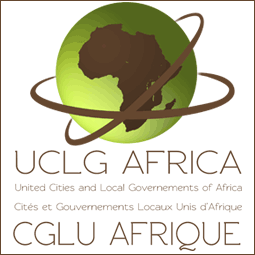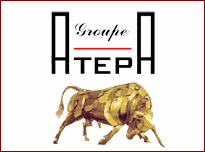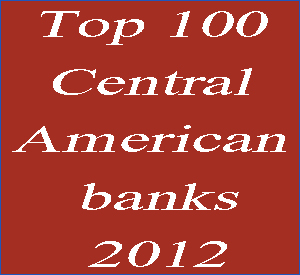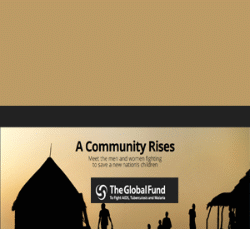Introduction
Recent Economic Developments and Prospects
Macroeconomic Policy
Fiscal Policy
Monetary Policy
External Policy
Structural Issues
Other Recent Developments
Public Resource Mobilisation
Social Context and Human Resource Development
Construction & Real Estate
Industry
Ethiopia Economy Profile 2013
Recent Economic Developments and Prospects
The Ethiopian economy experienced structural change in 2008-09, in which the leading agricultural sector gave way to the service sector – it emerged as the dominant sector of the economy in terms of GDP share and increase in price added. The share of agriculture in GDP declined from 51% in 2000/01 to 44.6% in 2007/08, formerly declining further to 43% in 2008/09. Agriculture was expanding at the rate of 6.4% in real terms in 20008/09, down from 7.5% in 2007/08 and 9.4% in 2006/07. In 2008/09, increase in crop production, which accounts for over 65% of agricultural output, was lower than the 8% increase registered in 2007/08 by 1.5 percentage points. Animal farming and hunting as well grew by 7% in 2008/09, down from 7.3% in the preceding fiscal year. However, forestry and fishing, which account only for 3.4% and 0.02% of the agricultural sector, were expanding at about 3% and 27% in 2008/09, down from 4.2% and 34% increase in 2007/08 though higher than the 2.9% and 7.7% increase in 2006/07, respectively.
Despite the in general strong performance of the agricultural sector, the country continues to face food insecurity due to failed rains in consecutive seasons in parts of Somali Region, Afar, Oromiya, Tigray, Amhara and Southern Nations, Nationalities, and Peoples (SNNP) regions. The government statement released in October 2009 – based on June and July 2009 multi-agency assessment results – estimated that 6.2 million people would require emergency food assistance between October and December 2009. This was in addition to the estimated 7.5 million chronically food-insecure beneficiaries who receive assistance, either through employment opportunities or food assistance and cash transfers, from the government-managed Productive Safety Net Programme (PSNP). The joint Ethiopian government and development partners statement released in January 2010 revealed that approximately 5.2 million people would require relief food assistance in 2010.
Non-agricultural sectors expanded at a much faster pace than the agricultural sector. Services, the fastest growing sector since 2005/06, became the major sector of the Ethiopian economy in 2008/09 – accounting for over 45% of the national output. It registered real increase of 14% in 2008/09, slightly down from 16% in 2007/08. This remarkable increase in services was mainly attributed to rapid expansion in financial intermediation, public government and defence, hotels & restaurants, and real estate, renting and business activities, each of which grew by additional than 16% in 2008/09. In the same year, education, trade (wholesale & retail) and transport & communication recorded real increase rates of 11.4%, 12.1% and 8.7% respectively.
The industrial sector, which exhibited a marginal increase in its share of GDP from 12.1% in 2000/01 to 13% in 2007/08 and 2008/09, registered real increase of 9.9% in 2008/09, down marginally from the 10% increase in 2007/08. The 2008/09 expansion in the industrial sector was driven mainly by the increase in construction (11.7%) and manufacturing (9.4%). Manufacturing has been expanding by almost 10% a year, on average, during 2001/02-2008/09. But as a percentage of both GDP and in industry, its share fell from 5.5% and 39% in 2002/03 to 4.9% and 38% in 2008/09, respectively. The share of construction in industrial output, by contrast, increased from 43% in 2003/04 to 45% in 2008/09 though its share in total GDP as well declined, from 6.1% to 5.8% over the same years. On average, large and medium-scale manufacturing has been growing at a much faster rate than the small-scale and cottage industries since 2005/06. The water and electricity sub-sector expanded at 5.7% in 2008/09, up from 4.8% in the previous year while mining and quarrying grew at almost 13% in 2008/09, down from over 21% in 2007/08.
The plan for accelerated and sustained development to end poverty (PASDEP) represents the second phase of the Poverty Reduction Strategy Programme (PRSP) and runs from 2006/07 to 2010/11. It is based on the country’s strategy of agriculture-led industrialisation and calls for massive investment , particularly in infrastructure. The ongoing transformation of subsistence farming into the commercial farming is being supplemented by institutional reforms and facilitated by the expansion of supporting infrastructure such as road and markets. The World Bank launched a Country Assistance Strategy (CAS) for Ethiopia covering the period of July 2008 to June 2011. The new CAS is intended to support Ethiopia in achieving four major strategic objectives, consistent with PASDEP: fostering economic increase; improving access to and quality of basic service delivery; reducing Ethiopia’s vulnerability to help improve prospects for sustainability; and improving governance.
Domestic request, mainly private consumption, has grown strongly since 2002/03. Private consumption, the major component of domestic request, accounted for about 87% of GDP in 2008/09, up from almost 77% in 2000/01. However, public consumption fell from 15.6% of GDP to 9.2% over the same period. Private investment , by contrast, was not only less than public investment but as well falling from as high as 11.2% of GDP in 2000/01 to 6.5% in 2008/09, but public investment increased from 8.9% of GDP in 2000/01 to 14.4% in 2008/09. In general, gross domestic investment declined from 21.6% of GDP in 2007/08 to 20.8% – the lowest level since 2001/02 – in 2008/09. Gross domestic savings plummeted from 6.3% of GDP to the historically low level of 3.2% in 2007/08 formerly recovering to 4.2% in 2008/09. As a result, the resource gap improved to 18.2% of GDP in 2008/09, up from to 19.4% of GDP in 2007/08, owing to both the decline in investment and increase in savings.
Fiscal Policy
In 2011 the government maintained a prudent fiscal stance to ensure macroeconomic stability in the face of high inflation. The centrepiece of the government’s fiscal policy in FY 2010/11 was strengthening domestic revenue mobilisation, reducing domestic borrowing and increasing spending on battling poverty. Accumulation spending as a share of GDP declined slightly from 19.0% of GDP in 2009/10 to 18.3% of GDP in 2010/11. The share of anti-poverty spending in total spending has been rising and reached 67% in 2010/11 from 57% in 2004/05. Accumulation expenditures are expected to increase in 2012 and 2013 to support the implementation of the GTP, with capital spending projected to grow faster than recurrent spending.
The major sources of spending financing are domestic revenues and external grants. The government is committed to expanding its domestic revenue mobilisation efforts to ensure fiscal sustainability. In 2011 it continued to implement measures aimed at improving tax government and enforcement. Tax revenues increased by 37% in 2010/11, compared with the previous year. However, the domestic revenue to GDP ratio increased only marginally from 11.2% in 2009/10 to 11.3% in 2010/11 because of a 34% increase in nominal GDP. Domestic revenues as a share of GDP are projected to increase to 11.6% and 11.8% in 2012 and 2013 respectively, while external grants as a share of GDP are expected to remain constant at 4.2%.
Ethiopia’s strong fiscal management efforts have led to an development in the in general fiscal position. The fiscal deficit declined to 1.6% of GDP in 2010/11 from 1.7% in 2009/10. In 2011, the government introduced cash budgeting which will obviate the need for direct advances from the central bank to meet temporary liquidity shortfalls. Nevertheless, the fiscal deficit is projected to rise during the GTP period, owing to its ambitious public spending plans.
Private Sector
Reforms have enhanced the role of the private sector in the Ethiopian economy but its potential to increase investments and drive increase has not been fully exploited. In 2010/11 the private sector’s share of gross capital formation in GDP was only 6.9%, which can be explained by both external and internal factors. The former include lack of access to finance and foreign exchange, the difficulty in securing land, and frequent change of government policies and regulations. The expansion in informal economic activities is as well a constraint to the increase of formal enterprises. Part the internal constraints is lack of technical and managerial skills and weak entrepreneurial capacity.
The World Bank’s 2012 Doing Business rankings show deterioration in some indicators compared with 2011, notably access to finance, investor protection, registration of property and cross-border trade. Ethiopia continues to fare relatively better in paying taxes, dealing with construction permits, opening businesses and enforcing contracts. Ethiopia ranks 40th in paying tax, 56th in dealing with construction permits and 57th in enforcing contracts.
Changes to the business regulatory framework are proving burdensome, particularly the Commercial Registration & Business Licensing and the Trade Practice & Consumer Protection proclamations of 2010. Under these regulations, some of the licensing requirements have been tightened by restricting the permitted range of activities for private companies. Ethiopia’s in general ranking in Doing Business slipped from 104 in 2011 to 111 in 2012 out of 183 nations. While this slippage may be due to the relatively better performance of other nations, it underscores the need for Ethiopia to intensify policy efforts in this area. On the positive side, the Memorandum of Considerate (MoU) on the Public Private Dialogue Forum, which was signed in 2010 between the government and representatives of the private sector, became operational in 2011. Building mutual trust will be essential to ensure the success of this forum in seeking solutions to problems faced by the private sector. Clearly, if Ethiopia is to sustain high and inclusive increase, continued efforts to improve the business climate are required.
Financial Sector
Ethiopia’s financial sector is dominated by national-owned banks, mainly the Commercial Bank of Ethiopia (CBE). Currently public banks account for 67% of total deposits and 55% of loans and advances. In 2010/11, two new private banks were licensed, bringing the total number of private banks to 14.
The financial sector is shallow, with a limited range of services. Banking coverage stands at about 120 755 people per commercial bank branch, making Ethiopia one of the majority under-banked nations in sub-Saharan Africa. The vast majority of small entrepreneurs lack the collateral necessary to obtain a bank loan. By June 2011 the private credit to GDP ratio for Ethiopia was around 9% compared with the average of 30% for sub-Saharan Africa. According to the World Economic Forum’s World Competitiveness Statement 2011-12, Ethiopia ranked 125 out of 142 nations with respect to financial-market development.
Further, the banking sector remains closed to foreign participation and capital markets are non-existent. This has limited evolution in innovation and dynamism in the sector. The policy, regulatory and institutional frameworks for microfinance institutions (MFI) are, however, well established. Currently there are 31 MFIs reaching around 2.4 million people. The request for microcredit, however, far outstrips supply.
The government has recently taken further steps to strengthen the financial sector. In 2011 the National Bank of Ethiopia (NBE) launched a modern payment system and set up a centralised clearing system which will speed up the time for settlement of cheques. However, some of the recent measures are likely to weaken financial intermediation and make the playing field between private and public banks additional uneven. In 2011, the government issued a directive requiring commercial banks to invest 27% of their gross loan disbursements in NBE bonds as a way of mobilising resources for long-term investment projects. The financial sector will need deepening to improve efficiency in financial intermediation, broaden access to credit and expand domestic savings. In the GTP the government plans to strengthen the financial sector with the aim of establishing an accessible, efficient and competitive economy.
Public Sector Management, Institutions & Reform
Property rights are protected by law, though enforcement is weak. In 2011 Ethiopia scored 30 out of a possible total score of 100 on the property-protection index of the Heritage Foundation and was on a downward trend on the property-rights indicator of the 2011 Ibrahim Governance Index. Contracts are enforced, albeit with some delay because of weaknesses in the capacity of the legal and judicial system. The government is implementing commercial law reforms which, combined with capacity building in the judiciary, are expected to improve arrangement enforcement further.
Reforms to improve the efficiency of public-service delivery are continuing under the Public Sector Capacity Building Programme, presently in its second phase. Key areas include decentralisation and civil service reform at amount levels. The government has continued to increase the budgetary allocation for federal block grants to regions, while strengthening local capacity. The 2010 Public Spending & Fiduciary Assessment shows that Ethiopia’s public financial management system has improved and is relatively robust. However, there are weak areas that require attention, such as procurement and internal audits. As part of public sector reform, government institutions and agencies have been undergoing business process re-engineering. Furthermore, efforts to enhance accountability and integrity are underway within the framework of the government’s good governance package. Nevertheless, there is still some way to go formerly results-based ethics are embedded in the civil service.
Ethiopia’s ranking in the 2011 Transparency International Corruption Index worsened slightly from 116 the previous year to 120, although its score (2.7 out of a possible 10) remained the same, half reflecting an increase in the number of nations included in the index from 178 to 182. The government is strengthening its efforts to fight corruption. Anti-corruption sensitisation campaigns have been intensified and several government officials involved in corruption have been sentenced through the court system. The Federal Ethics and Anti-Corruption Commission is conducting corruption surveys, covering key institutions, to gain a better considerate of the authentic extent of the problem.
Natural Resource Management & Environment
Ethiopia’s ecological system is fragile and vulnerable to climate change. Key challenges include soil degradation, deforestation and loss of biodiversity, which have been compounded by people pressure on land, particularly in the highlands.
The government’s existing policy and institutional framework for natural-resource management and the environment is adequate and sound. The policy objective is to promote rational utilisation of natural resources to support sustainable increase and poverty reduction. The focus includes improving watershed management, afforestation and soil conservation. The policies are mainstreamed in sectoral programmes which are implemented at the federal, regional and district (woreda) levels. The GTP recognises the nexus between poverty and the environment, and the importance of sound environmental management in sustainable development. The legal framework at the federal and regional levels has been strengthened, but enforcement of the laws remains weak.
The government is consolidating efforts to mainstream environmental issues in the development process. Woredas have prepared and are implementing environmental management plans, inclunding the scaling up of the protection and conservation practices (water, forestry) though community participation. The environmental sensitisation campaigns at the community level have been expanded with youth as one of the key target groups. Through its reforestation programme, the government has increased forest coverage from 4.1 million hectares in 2006 to 8.8 million hectares in 2010. Weak capacity in environmental management and enforcement are the key challenges. In 2011, the government launched its carbon resilience and green development strategy and has set measurable targets for climate-change adaptation and mitigation during its implementation.
Political Context
Ethiopia continues to face challenges in its democratic transition process. National elections were held in 2010, and the ruling Ethiopian People’s Revolutionary Democratic Front (EPRDF) won with an overwhelming majority. The elections were not all competitive, half because the opposition parties were too weak and fragmented. Although the internal political environment has remained stable, recent developments suggest that the political space is narrowing. In 2011 some members of the opposition parties were arrested and accused of involvement in terrorist activities, charges that have been denied by their parties. The Civil Society Organisation (CSO) Law, which was passed in 2009, is seen by some stakeholders as an impediment to effective engagement of CSOs in advocacy work.
Ethiopia occupies a strategic location in the Horn of Africa, and is playing a vital role in efforts to enhance regional security as part of a co-ordinated response. Next withdrawing from Somalia some years ago, Ethiopia joined Kenya in a peacekeeping mission there in late 2011/12. The country has as well been actively involved in the peacekeeping process in Sudan. The increasing instability in Somalia has become a major security threat to neighbouring nations, particularly for Ethiopia and Kenya.





.gif?1356023993)
.gif2_.gif?1356029657)





